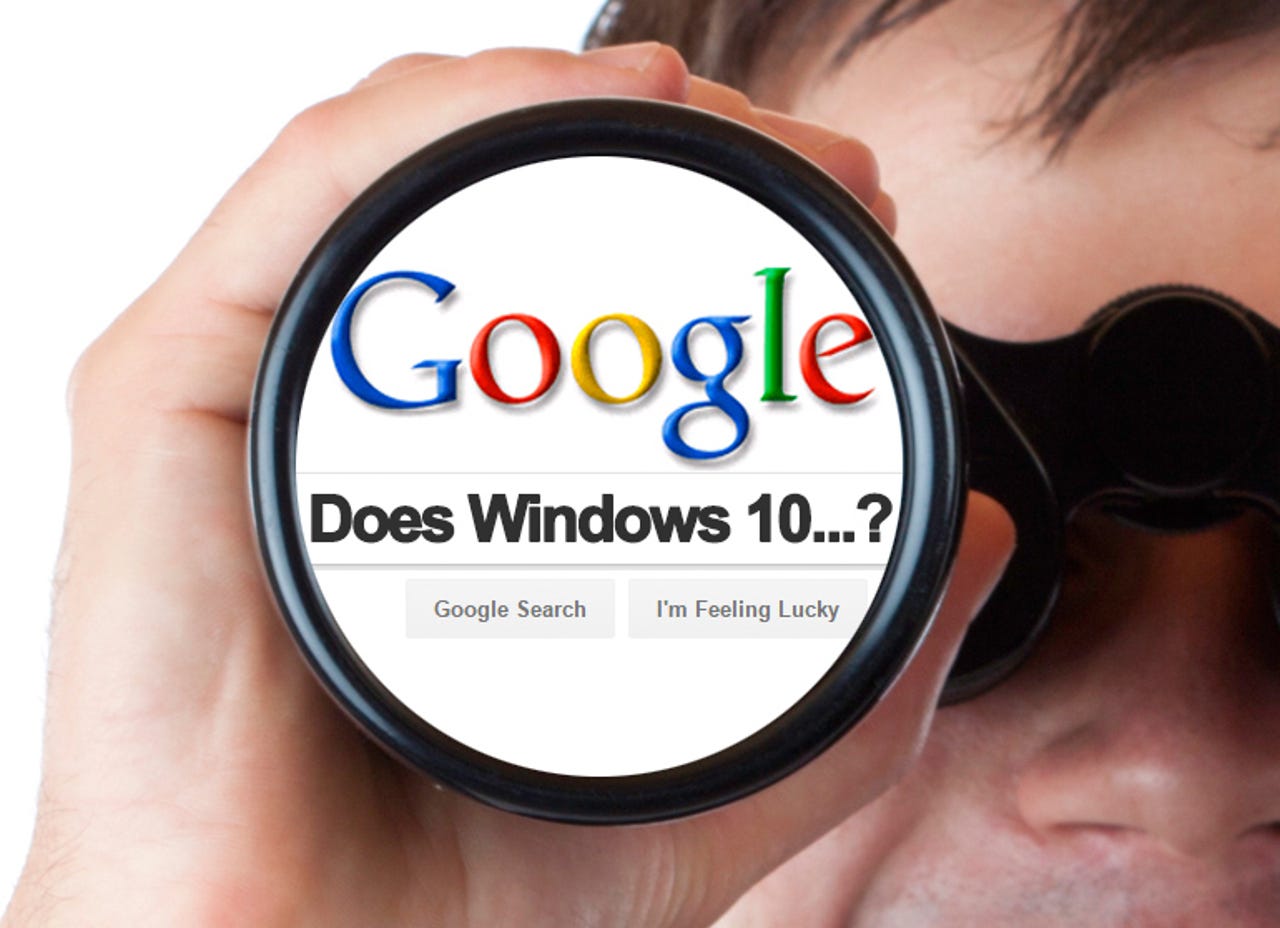Does Windows 10 need antivirus software? (And more top Google queries answered)


Google's autosuggest feature lets you know, sometimes with spooky accuracy, what other people are looking for when conducting queries similar to yours. So, with Google's help, we provide answers to a few of the most popular searches about Windows 10.
Does Windows 10 need antivirus software?
There's no easy yes-or-no answer to this controversial question.
Every copy of Windows 10 includes Windows Defender Antivirus (the successor to Microsoft Security Essentials), which includes all the features normally associated with third-party antivirus software. It downloads new signatures several times a day and also has a cloud-based component.
That built-in software is turned on automatically with a new installation of Windows, and Windows also turns it on if you have third-party antivirus software installed that reports it is out of date (if you fail to renew a subscription, for example).
Windows 10: The smart person's guide [TechRepublic]
We won't pass judgment on whether Windows Defender is better or worse than third-party alternatives. But if you prefer a third-party program, feel free to install it. Windows Defender slides gracefully out of the way when it detects a third-party program.
Does Windows 10 come with Office?
The combination of Windows and Office is so popular that it's not surprising some people wonder whether they aren't included as a single package.
But a standard installation of Windows 10, whether it's from a retail copy of the software or on a new PC, does not include any version of Microsoft Office. If you want Office on a Windows 10 PC, you'll have to pay for it.
Windows 10 does include a Get Office app, which lets you sign up for a trial of Office 365. The free OneNote app (a member of the Office family) is also included as part of a standard Windows 10 installation, and the lightweight "modern" versions of Word, Excel, and PowerPoint are also available free through the Windows Store.
Does Windows 10 have Bluetooth support?
If your PC, tablet, or mobile device has Bluetooth hardware, Windows 10 supports it. Of course, that doesn't mean you can automatically count on that hardware being there.
Under Microsoft's certification requirements for Windows 10, Bluetooth hardware is listed as Optional for desktop and laptop PCs. If Bluetooth is present on a newly designed device, however, the minimum hardware requirements include compliance with the Bluetooth 4.0 specification and support for the Bluetooth Low Energy protocol.
Given the prevalence of Bluetooth keyboards, mice, and audio hardware, you're very likely to find a Bluetooth radio on a newer PC. On older systems without Bluetooth hardware, you can add support with an inexpensive USB dongle.
To check the status of Bluetooth support in Windows 10, go to Settings > Devices and look for the Bluetooth (or Bluetooth & Other Devices) category.
Does Windows 10 include Movie Maker or another video editor?
If you remember early versions of Movie Maker, consider yourself a genuine Windows greybeard. After its debut in Windows Me (yes, really), Movie Maker continued to improve steadily and eventually became a part of the Windows Essentials package.
This lightweight video editing program developed a loyal cult following, but after a 2012 update development stopped, and the product was officially discontinued and pulled from Microsoft's download pages in January 2017.
Ironically, the Windows 10 Creators Update (version 1703) doesn't include any video editing software. For those tasks, you'll have to find a third-party app.
Does Windows 10 automatically update?
Yes, Windows 10 automatically updates. In fact, the automatic updates are a core feature of the "Windows as a service" model, and many Windows Update features you might have grown accustomed to with Windows 7, such as the option to download updates and then choose which ones to install, are no longer available.
Ed Bott's 10 most popular Windows 10 tips
Windows 10 updates are divided into two categories. Quality updates include security and reliability fixes, similar to those you're familiar with from previous Windows versions. Feature updates arrive roughly twice a year and are the equivalent of full version upgrades, albeit smaller and without any cost.
If you have Windows 10 Pro or Enterprise, you can use Group Policy settings to defer updates temporarily, by up to 30 days for quality updates and up to 365 days for feature updates. But once those deferral periods expire, the updates are mandatory.